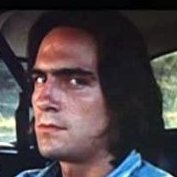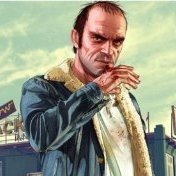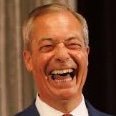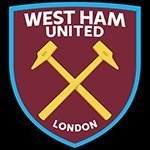Bangkok desperately needs more mass transit
-
Recently Browsing 0 members
- No registered users viewing this page.
-
Topics
-
-
Popular Contributors
-
-
Latest posts...
-
18
THAILAND LIVE Thailand Live Wednesday 9 July 2025
Man Dies in High-Speed Crash After Losing Control on Bend Near Pattaya Picture courtesy of SiamChon. A 61-year-old man has tragically died after losing control of his car and crashing into a residential wall in the early hours of 8 July in Chonburi province. Full story:https://aseannow.com/topic/1366173-man-dies-in-high-speed-crash-after-losing-control-on-bend-near-pattaya/ -
25
Report Tragedy Strikes: UK Man Passes in Thailand, Baby Born Days Later
If the man could afford to travel to and stay in Thailand leaving a wife and 2 children with another so near to giving birth. They clearly have enough money to support the 3rd child. Why do they need the gofundme? You did not save anyone.. -
0
Accident Man Dies in High-Speed Crash After Losing Control on Bend Near Pattaya
Picture courtesy of SiamChon. A 61-year-old man has tragically died after losing control of his car and crashing into a residential wall in the early hours of 8 July in Chonburi province. Rescue workers from Sawang Boriboon Thammasathan Foundation and officers from Huay Yai Police Station responded to emergency calls at approximately 01:35 following reports of a serious crash in Soi Chak Ngaew 14/1 (commonly known as Soi Nam Hom), Huay Yai subdistrict, Bang Lamung district. At the scene, emergency responders found a blue Mitsubishi Attrage sedan, registered in Bangkok, severely damaged after crashing into a concrete wall. The driver, later identified as Mr. Bangaeun Wiang 61, was discovered unconscious behind the wheel and suffering from critical injuries. Despite the efforts of rescue personnel to resuscitate him at the scene, Mr. Bangaeun was pronounced dead shortly after. Family members arrived at the scene in distress after being notified of the fatal incident. According to local residents, the crash occurred at a sharp bend. Witnesses reported hearing a loud crash and rushed out to find the wreckage. A driver who had been following the deceased told police that the driver appeared to be travelling at high speed before losing control and slamming into the wall of a nearby residence. Police officers documented the scene, gathered evidence, and coordinated with rescue workers to transfer the deceased’s body to Hospital, where it will be held until relatives make funeral arrangements. Mr. Bangaeun was reportedly a landlord who owned and rented out a row of shop units in the area. Authorities continue to investigate the circumstances surrounding the crash. Adapted by Asean Now from SiamChon 2025-07-09 -
18
THAILAND LIVE Thailand Live Wednesday 9 July 2025
27-Year-Old Man Missing, Later Found Detained in Laos with 10,000 Baht Ransom Demand Picture courtesy of kaoded A 27-year-old man from Chiang Rai has reportedly been detained in Laos under mysterious circumstances, with his captors demanding a ransom of 10,000 baht. His family remains in the dark about the reasons behind his detention and his current condition. Full story:https://aseannow.com/topic/1366172-27-year-old-man-missing-later-found-detained-in-laos-with-10000-baht-ransom-demand/ -
0
Crime 27-Year-Old Man Missing, Later Found Detained in Laos with 10,000 Baht Ransom Demand
Picture courtesy of kaoded A 27-year-old man from Chiang Rai has reportedly been detained in Laos under mysterious circumstances, with his captors demanding a ransom of 10,000 baht. His family remains in the dark about the reasons behind his detention and his current condition. The missing man, identified as Mr Wathanyu Chantaphun, known to his family and friends as “Fluke”, was last seen leaving his home in Ban Tham village, Pong Ngam sub-district, Mae Sai District, Chiang Rai Province, on 28 June. He had informed his grandparents, with whom he lived, that he was going to work for a local transport company with a friend. Carrying only a small bag, he walked out of the alley near his home and disappeared. According to his father, Mr Nitipat Chantaphun 54, Fluke was reachable by phone from 28 June to 1 July, but no one answered his calls. By 2 July, the phone appeared to have been switched off. Fearing for his safety, the family filed a missing person report with Mae Sai Police and took to social media in hopes of finding leads. Shortly after, friends informed the family that Fluke had contacted them using a Lao mobile number. He claimed he had been detained across the border in Laos, near the Kings Roman Casino in the Golden Triangle area opposite Chiang Saen District. The message relayed by his friends said Fluke was allegedly being held by Lao officials who demanded 15,000 baht, later negotiated down to 10,000 baht, for his release. Mr Nitipat visited Chiang Saen Immigration Office to verify whether his son had crossed the border legally, but immigration officials found no record of him departing through official checkpoints, leading to fears he may have crossed into Laos via an unofficial route. The family has since been advised to contact the Thai Consulate for further assistance. Mr Nitipat has pleaded publicly for his son to make direct contact, saying the entire family is deeply concerned. Fluke’s 73-year-old grandmother, Mrs Ampan Chantaphun, who raised him from the age of 11, described him as a quiet and reserved individual. Tearfully, she urged him to return or reach out. “If something is wrong, tell Grandma. We’re all very worried. I miss you.” The family also reported receiving a call from a foreign phone number, believed to be connected to Fluke, but did not answer it due to fears of it being a scam. As of now, the young man’s fate remains uncertain. Authorities continue to investigate the situation while the family hopes for a safe return. Adapted by Asean Now from Kaoded 2025-07-09 -
2
Crime Police Commended for Decisive Action After Man with Knife Shot in the Leg
Maybe more. Looks like cop lucked out and hit the guy.
-
-
Popular in The Pub










Recommended Posts
Create an account or sign in to comment
You need to be a member in order to leave a comment
Create an account
Sign up for a new account in our community. It's easy!
Register a new accountSign in
Already have an account? Sign in here.
Sign In Now